During my last stay in the Netherlands, I visited Leiden and I was very enthusiastic about this historic town. This time I had arranged to have lunch with a friend in Utrecht and I decided to make it a daytrip, so I could explore another historic town.
Let me start with three images. First a map of Utrecht , drawn in 1652. The town is surrounded by defensive moats (singels in Dutch).
This map is from 1856. Still not much development outside the singels
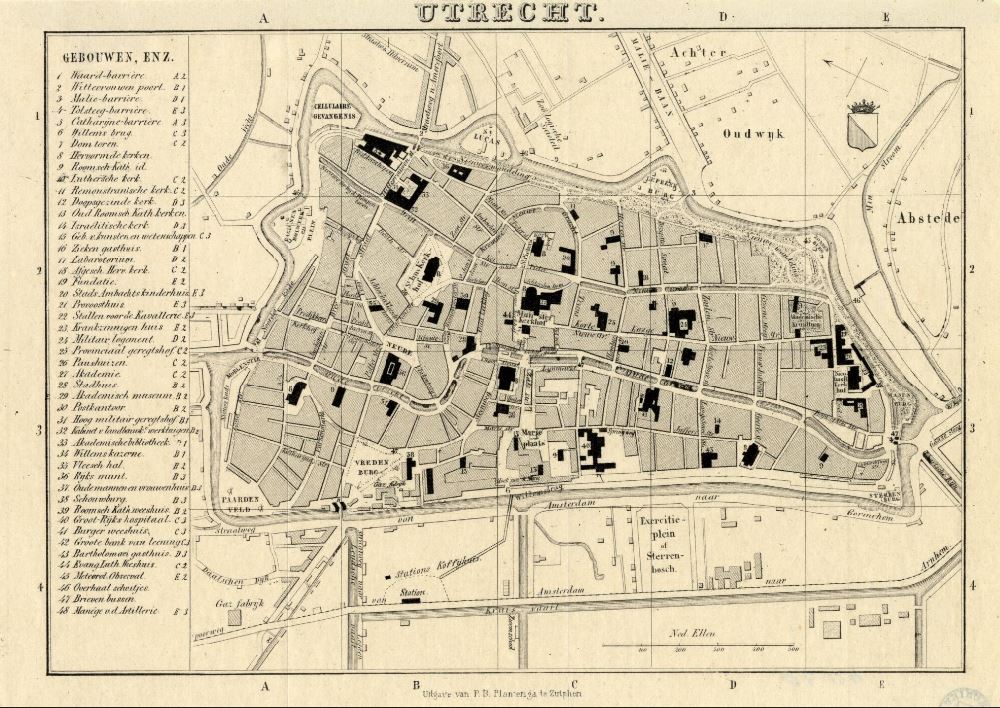
And here is a Google Earth screenshot from 2017. To guide the eye, I have marked the “singels” in blue and also indicated the locations where I have taken pictures. Click to enlarge. (I have rotated the GE image in such a way that North points in the same direction as in the old maps)
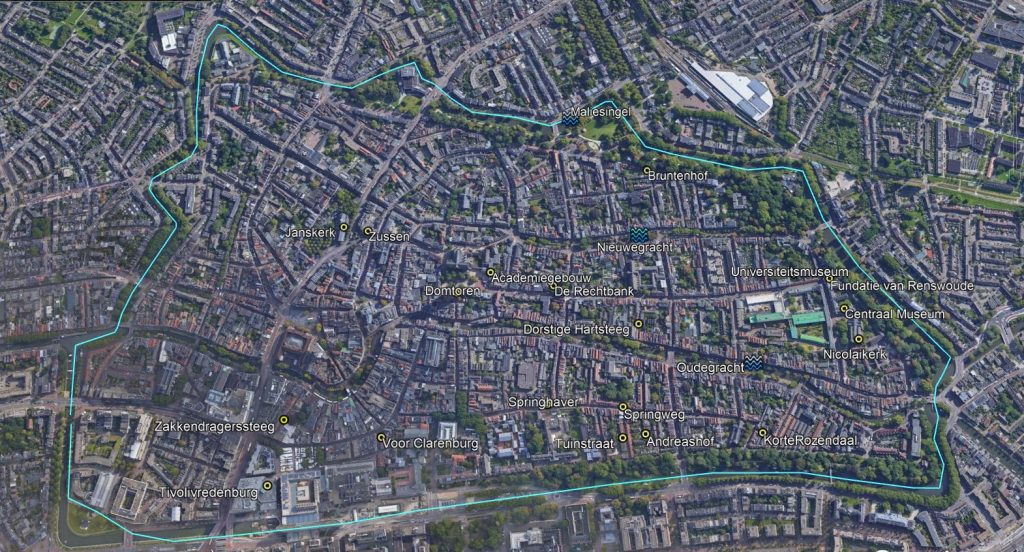
I arrived at Utrecht CS, the largest and busiest railway station in the Netherlands. To reach the historical town, I had to cross a shopping center to the Vredenburg square, from where I had a look at the TivoliVredenburg (2014), the modern music complex of Utrecht.
From the square I entered the Zakkendragerssteeg, mentioned for the first time in 1425 and reached the Oudegracht, dating back to the 12th century. In a few hundred meters from the 21th century to the Middle Ages 😉
The canals of Utrecht (Oudegracht, Nieuwegracht and a few minor ones) are rather unique in the world, very different from the Amsterdam ones. They have functioned in the past as an inner-city harbour. The canals were connected to the rivers Rhine and Vecht, and alongside the canals there were wharves, giving access to basement cellars, underneath the houses of the merchants.
I crossed the Oudegracht (more pictures later) and walked to the Janskerk, founded shortly after 1040, built in roman style, but of course modified many times later.
I had no time to visit the interior, and continued to the hallmark of Utrecht, the Domtoren (Dom tower) built between 1321 and 1382. With a height of 112 m it is the tallest church tower in the Netherlands. Work was being done on it during my visit.
On the Dom square I took a picture of the statue of Jan van Nassau, the younger brother of William of Orange, who has been instrumental in the signing of the Unie van Utrecht (1579), regarded as the foundation of the Republic of the Seven United Provinces, during the war of independence with Spain.
The Academiegebouw on the Dom square looks old, but isn’t ! It was built between 1891-94 in Dutch Neo-Renaissance style.
Then it was time for lunch. I met my friend at the Rechtbank, in earlier days a courthouse, now a popular cafe. He was one of my first students when I was a physics teacher, and is now a physicist himself…:-)
AFter our lunch I continued my walk, crossing the Nieuwegracht to the Maliesingel. The Nieuwegracht (New Canal) is actually very old, built around 1390, but still newer than the Oudegracht (Old Canal), which was built in the 12th century. The Maliesingel is one of the moats, still surrounding the old town.
In the past, rich people sometimes built simple houses for the poor around a courtyard. The Dutch name for such a compound is “hofje”, in Utrecht you still find an alternative name : Kameren. The houses consisted basically of one room (kamer). Here is the Bruntenhof (Bruntscameren), built in 1621.
I wanted to visit the Centraal Museum, so I walked back to the Nieuwegracht and the Lange Nieuwstraat. This “New Street” dates back to ca 1300, same as the Dorstige Hartsteeg. The church tower you see in the background, belongs to St Catherine’s Cathedral, no time to visit.
Walking to the Centraal Museum I noticed a sign for The University Museum and the Hortus , the former botanical gardens of the University.
I spent some time in the University Museum. Interesting mixture of sometimes weird objects. As a physicist I was of course interested in the particle accelerator, in this case even more, because my friend told me that he had actually been working with this machine, during his research!
Walking to the Central Museum I passed the Beyerskameren (1597), another charity project to give (free) housing to the poor.
The end of the Lange Nieuwsstraat is dominated by the Fundatie van Renswoude. Built in Rococo style in 1757, it was meant to provide education for “intelligent” orphan boys. The interior must be magnificent, but is only open to the public at specific times, like the Open Monument Day.
The Centraal Museum is the main museum of Utrecht, founded in 1838. It has an interesting collection of “old” art, modern art, applied art, the history of Utrecht etc. For me it was the first time that I visited the museum. Therefore quite a lot of pictures.
Many museums nowadays show their collection, combining the various art forms, like here: paintings, furniture, fashion. I really like this approach..
Of course the museum has lots of Rietveld furniture. The dollhouse is from the end of the 17th century and obviously not meant for children 🙂
Two examples of art mixing. Left 17th century portraits combined with a self-portrait by Carel Willink (1922). Right various forms of fashion.
Roelant Saverij (1576 –1639) was a Golden Age painter who lived a large part of his life in Utrecht.
Pyke Koch 1901 – 1991 ) can also be considered an Utrecht painter. He and Carel Willink were the main representatives of Dutch Magic Realism. He was a perfectionist, his oeuvre is quite small, and I am always happy to find one of his paintings in a museum. The Centraal Museum has quite a few!
J.H. Moesman (1909-1988) was born in Utrecht and lived there almost all of his life. A Surrealist painter, the “Dutch Dali”. The museum houses a large collection of his works.
I spent only about one hour in this museum, a next time I will stay longer, there is a lot to see, but I had to make my way back to the station.
The Nicolai church is located next to the museum. Its origins go back to the 12th century, the front with the two towers is still in the original Roman style. In 1586 one tower was raised to make room for a carillon.
A few more pictures of de Oudegracht.
On my way back, I visited a few more “hofjes”. Lot of heritage buildings, a very pleasant part of Utrecht.
But Utrecht is not only interesting because of its heritage. It is a lively town, with many cafes, restaurants and entertainment outlets. And there is a lot of Jugendstil in Utrecht, one of my architecturale favourites. But that will be for a future visit.
When friends of mine are visiting the Netherlands, I sometimes advised them to skip overcrowded Amsterdam and visit Utrecht instead. Now that I have walked around myself, I will keep telling them: Visit Utrecht!

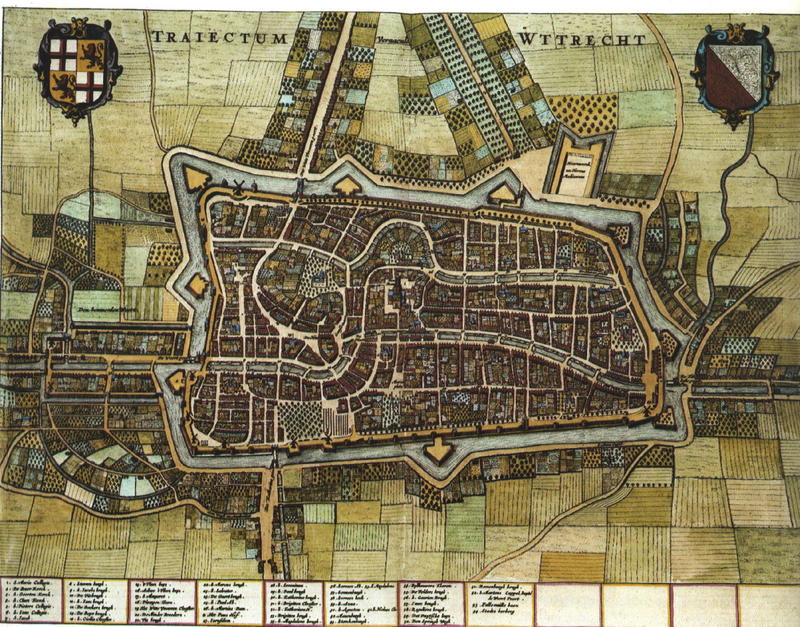



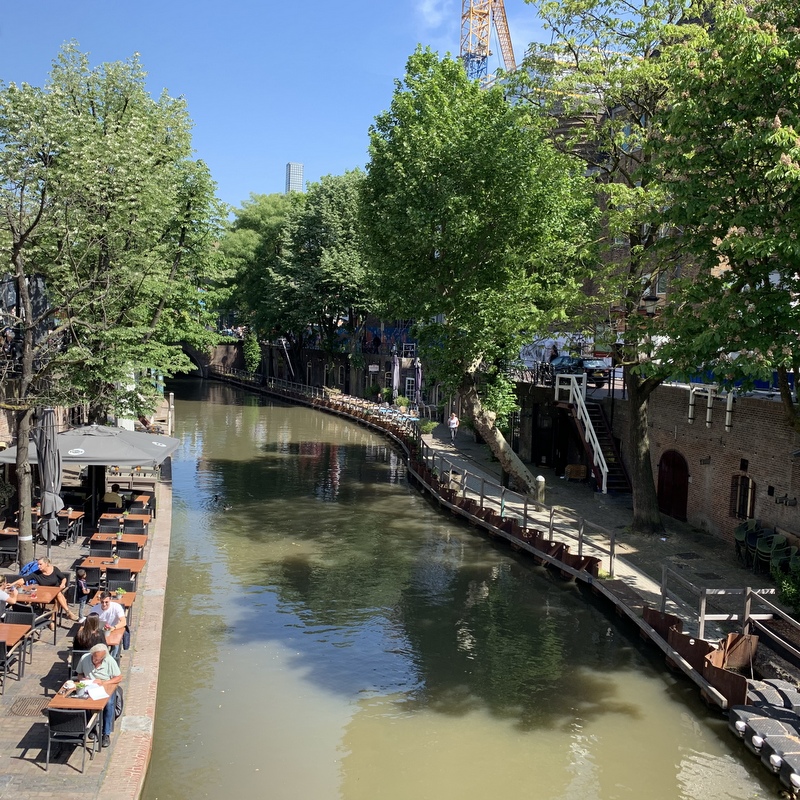
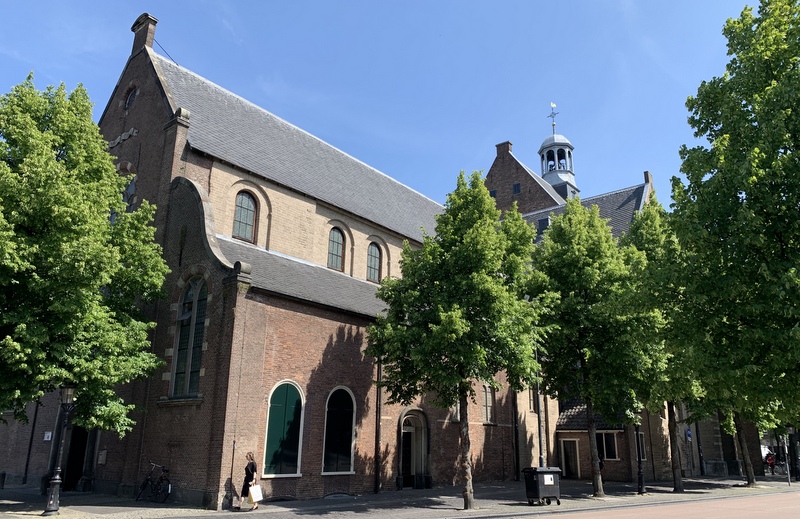

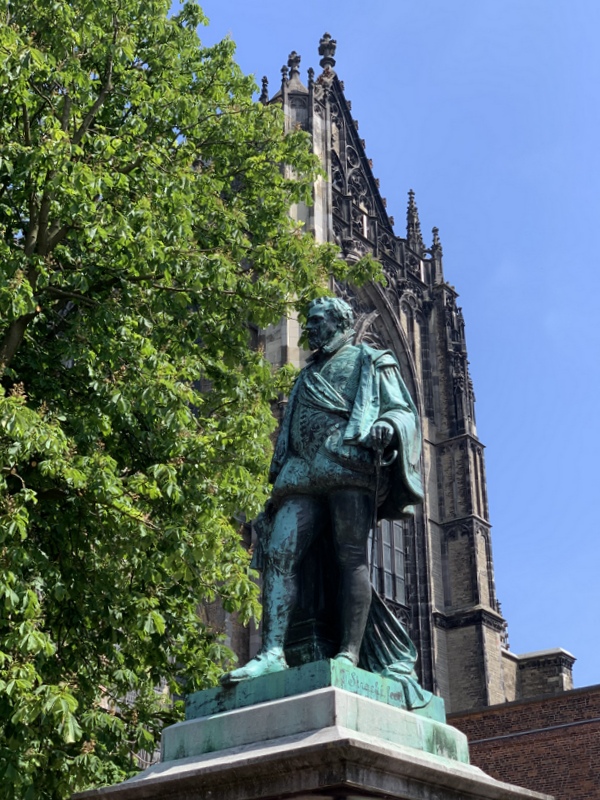



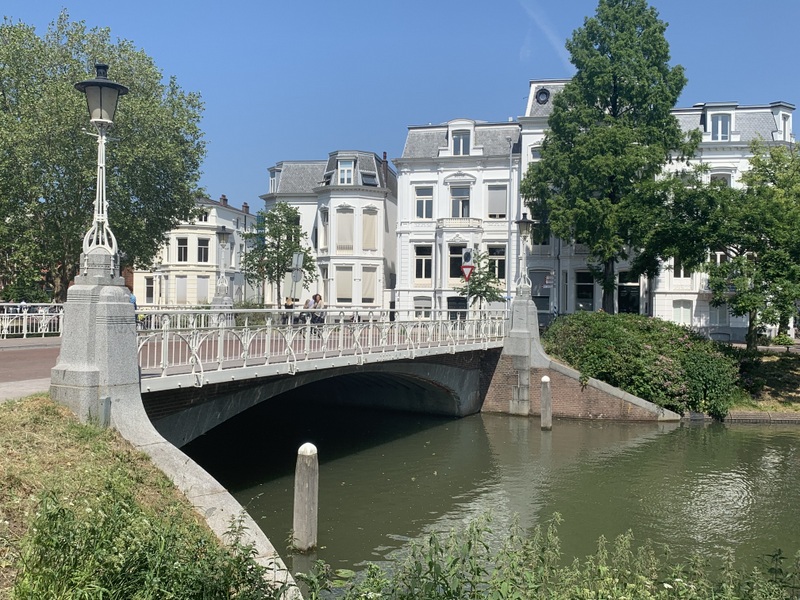
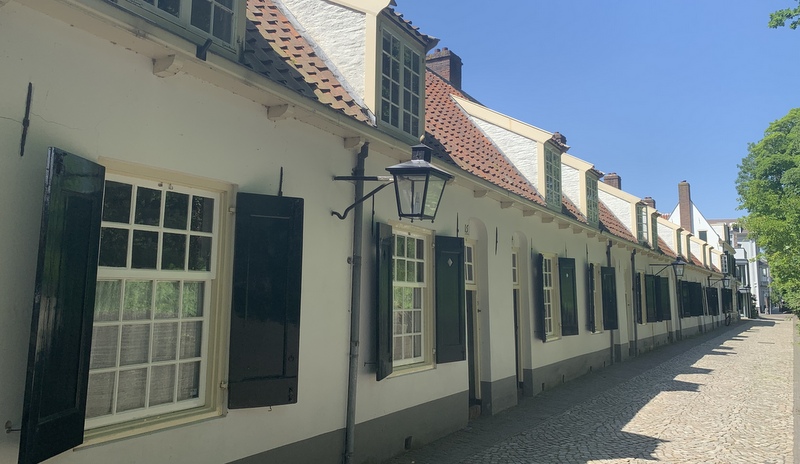
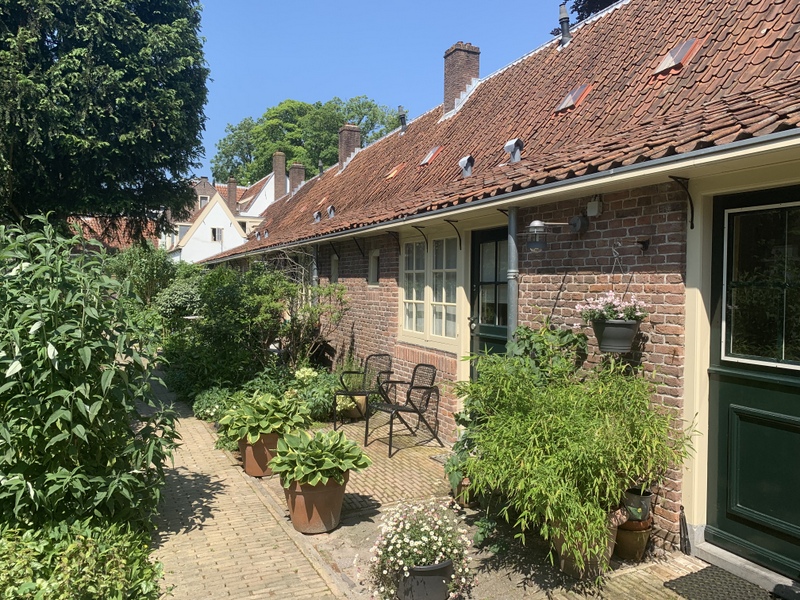
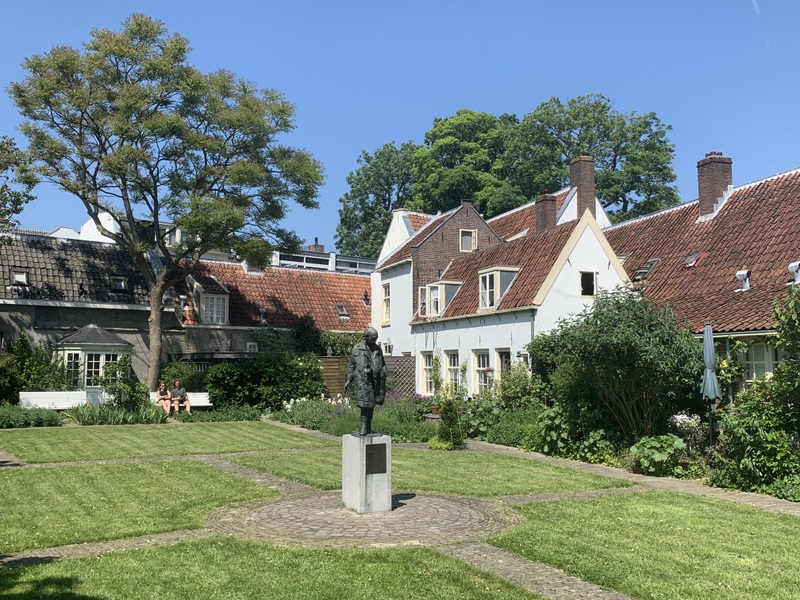
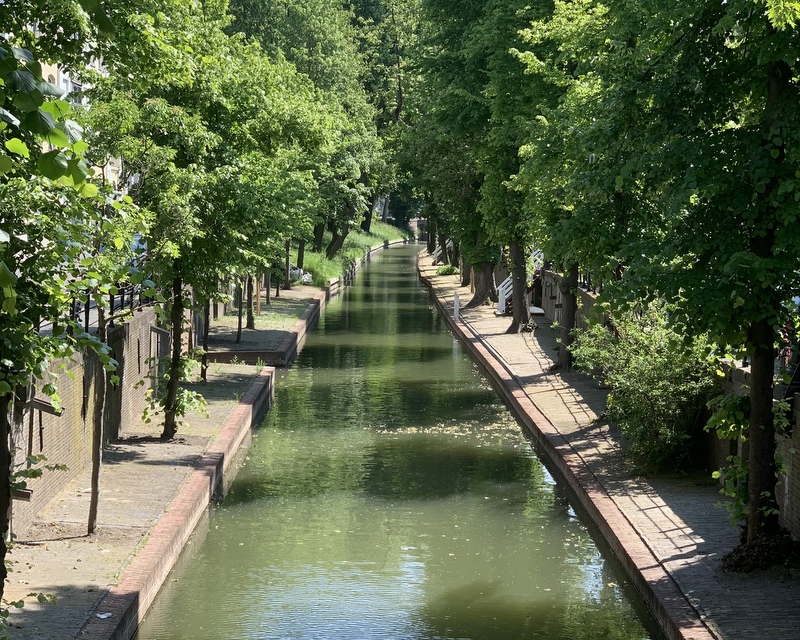
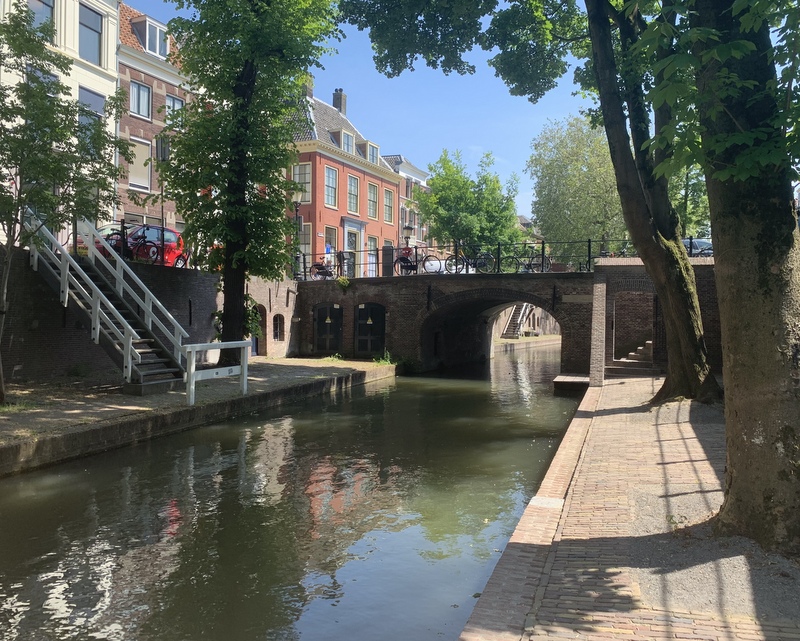
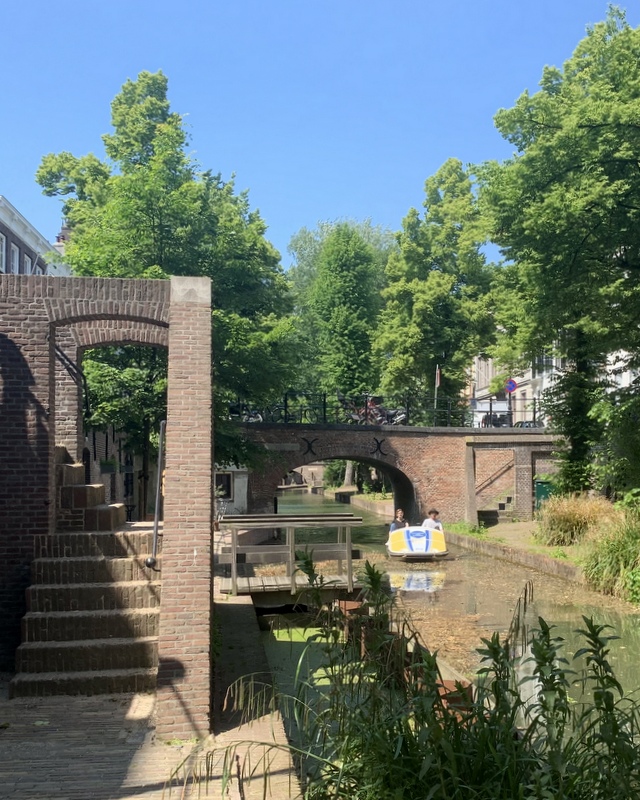

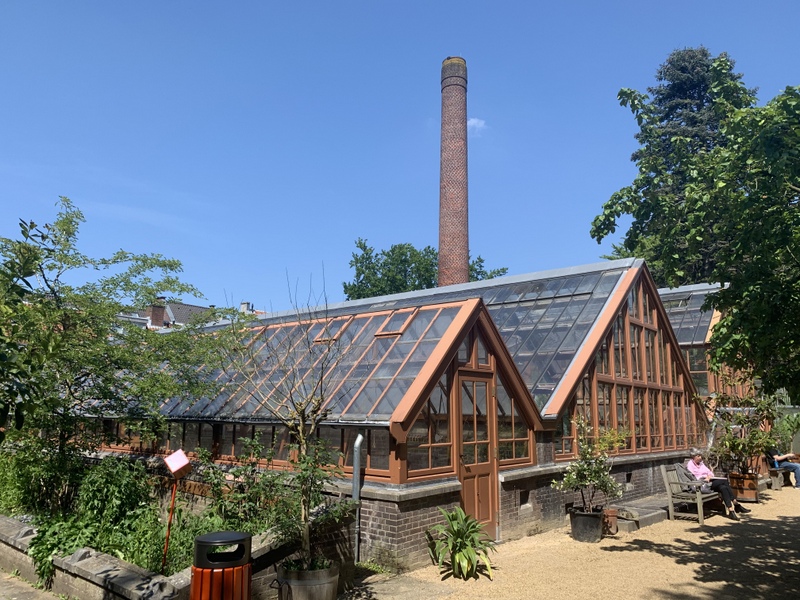
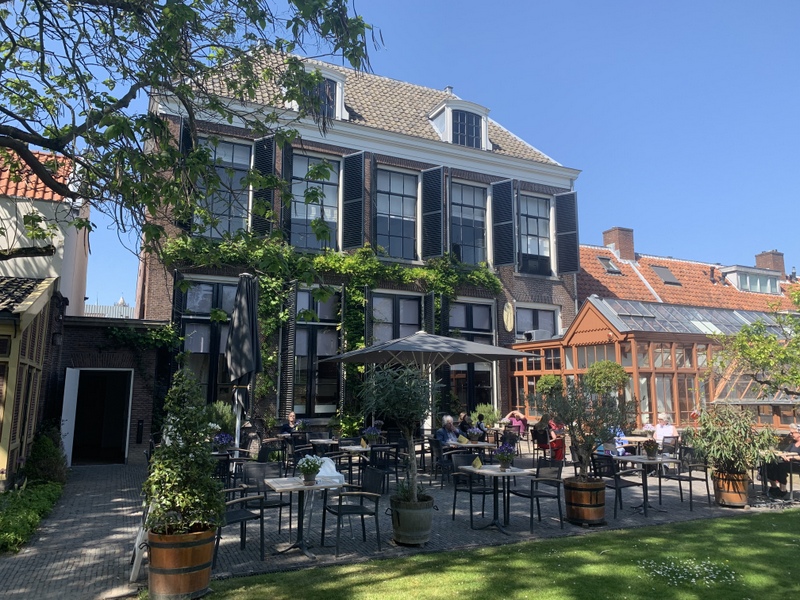
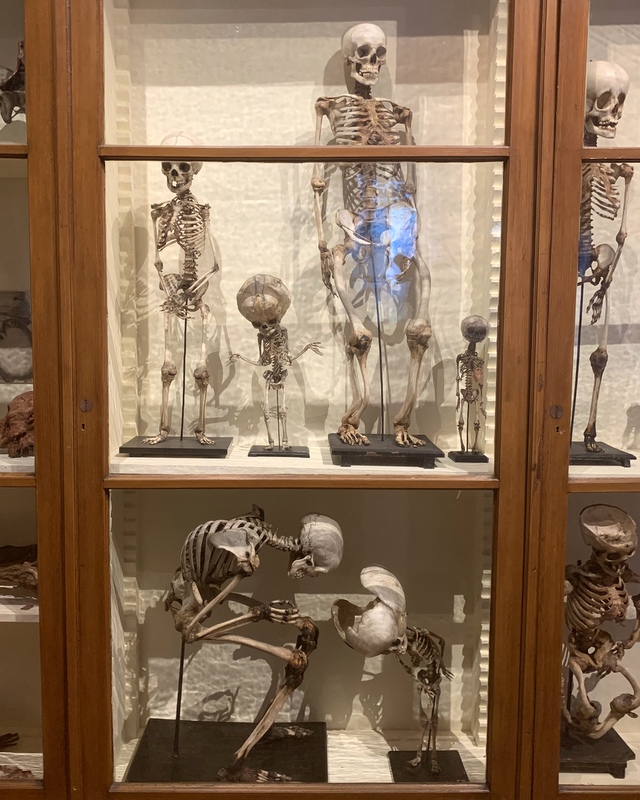
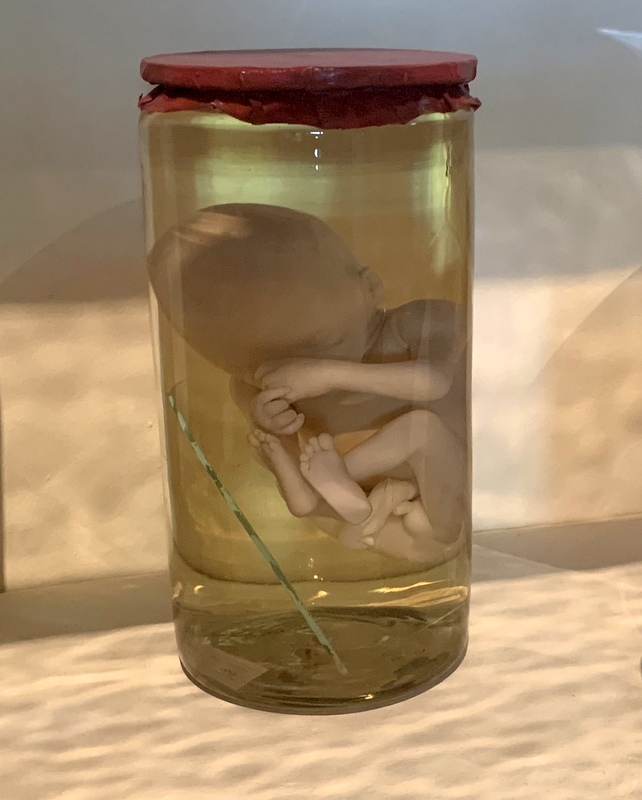

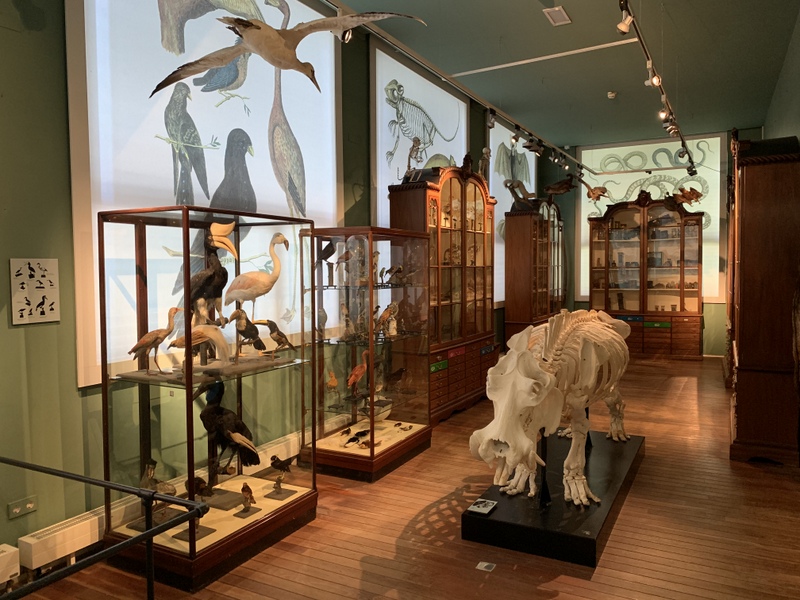


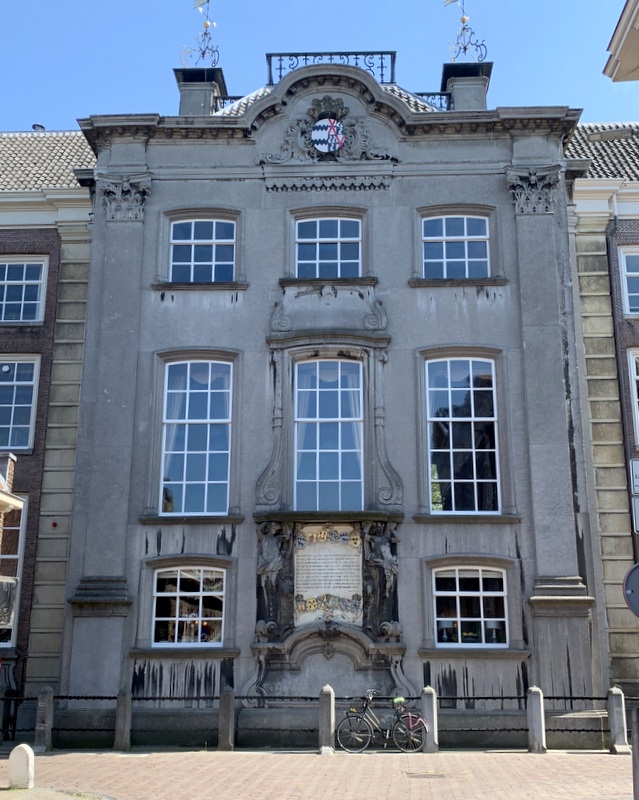
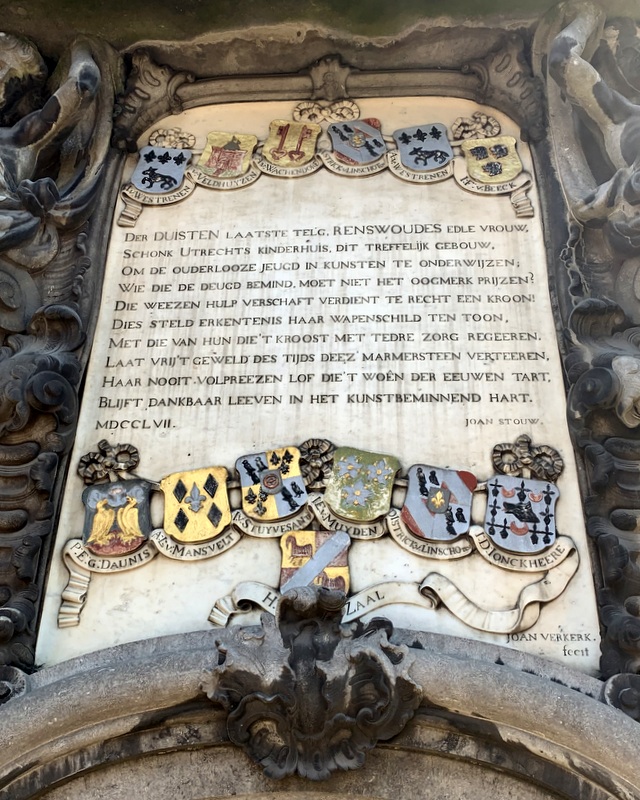

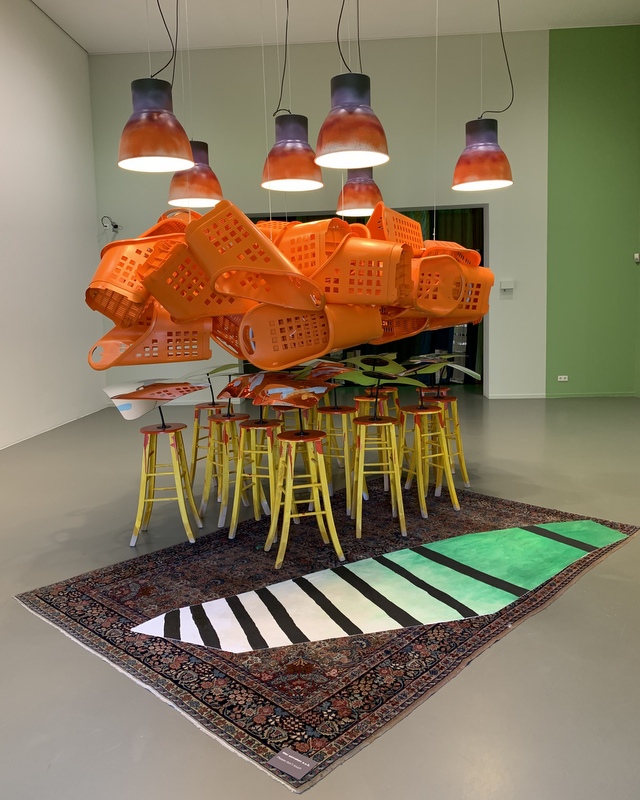
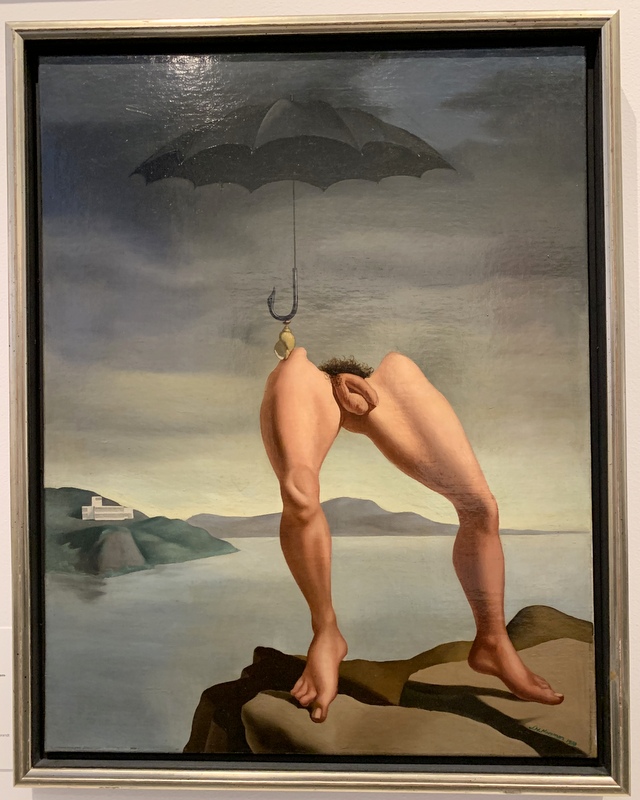

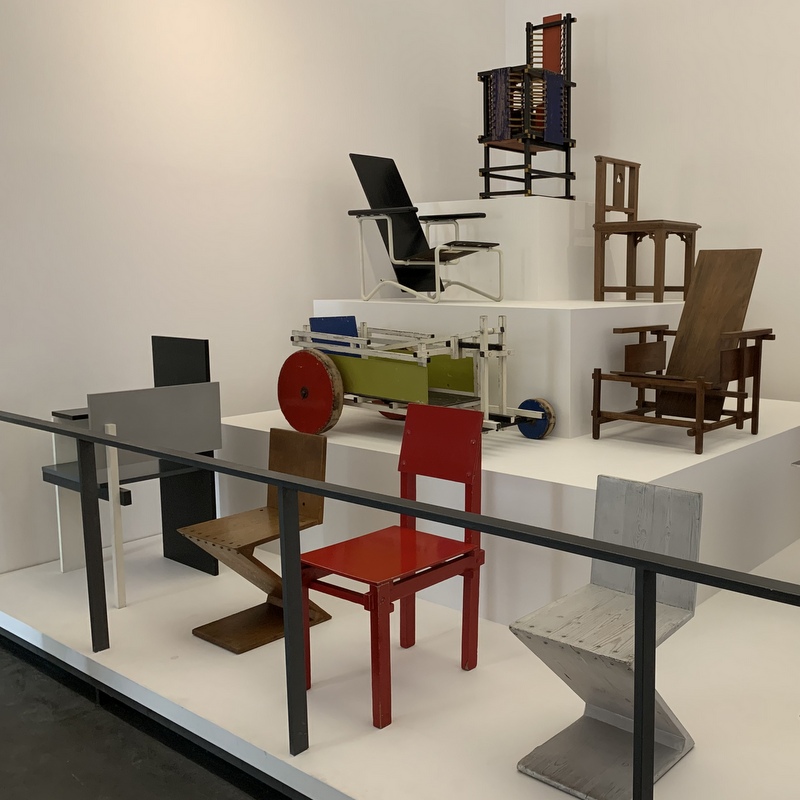

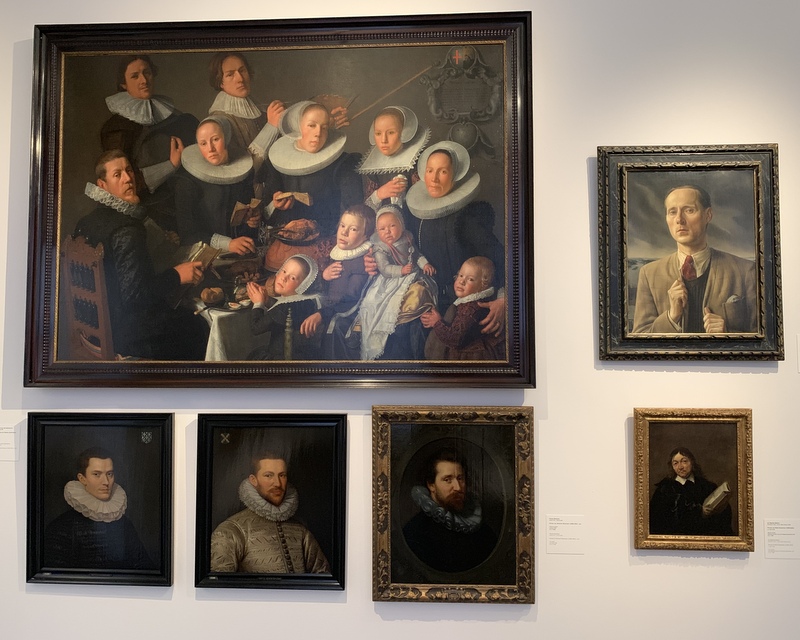


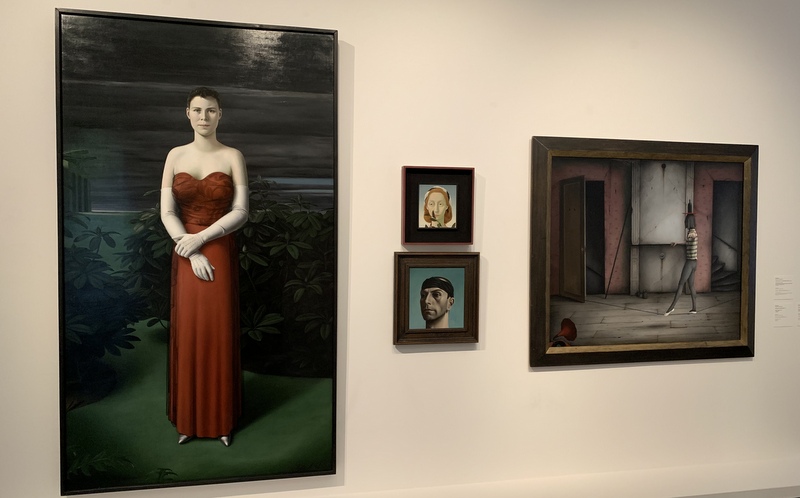
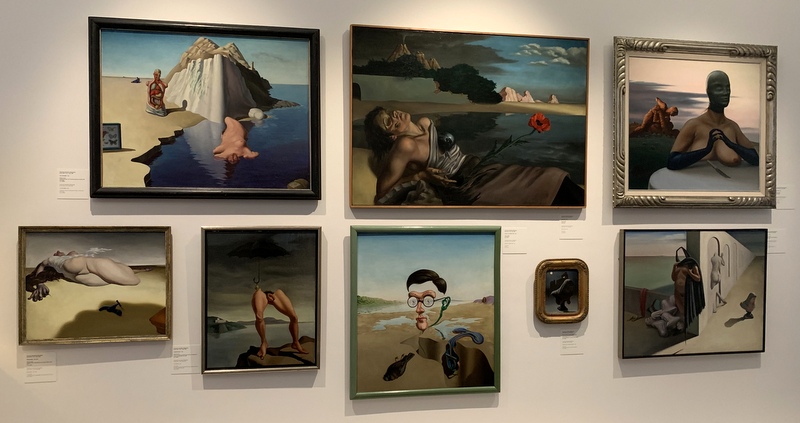
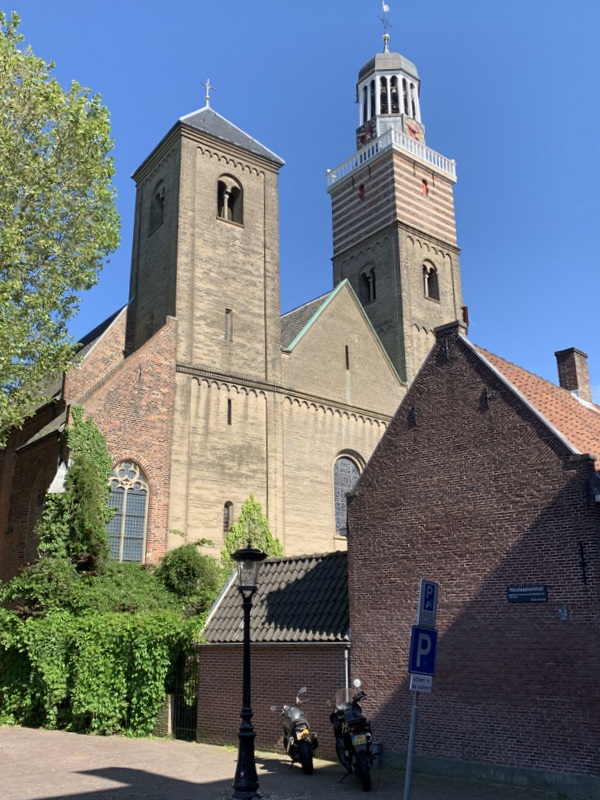
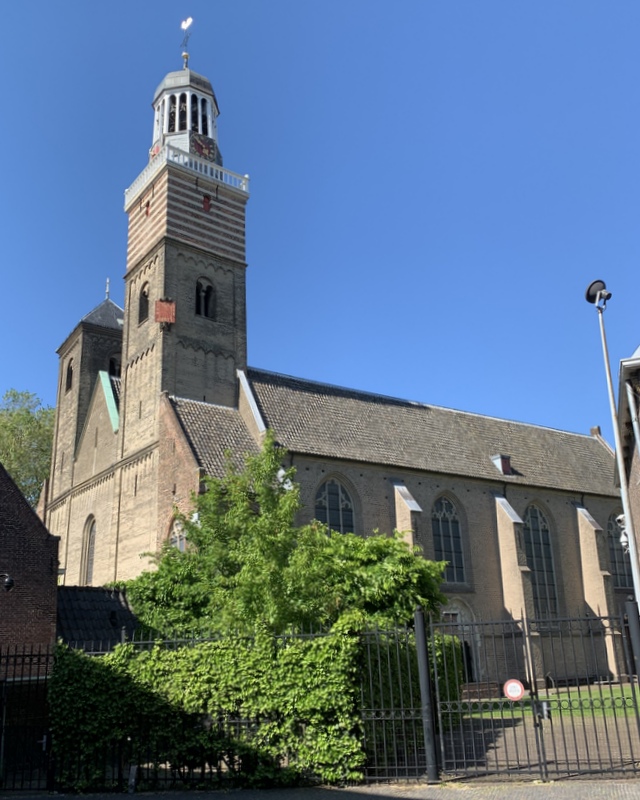
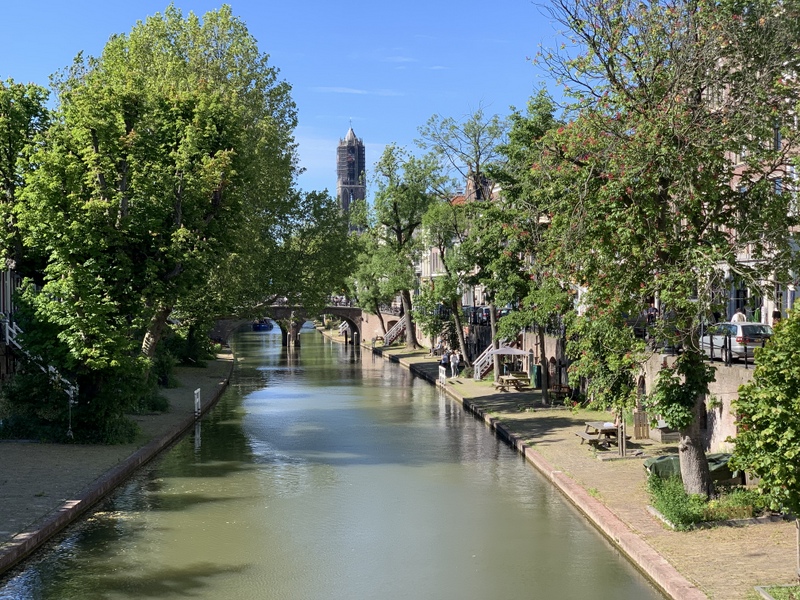



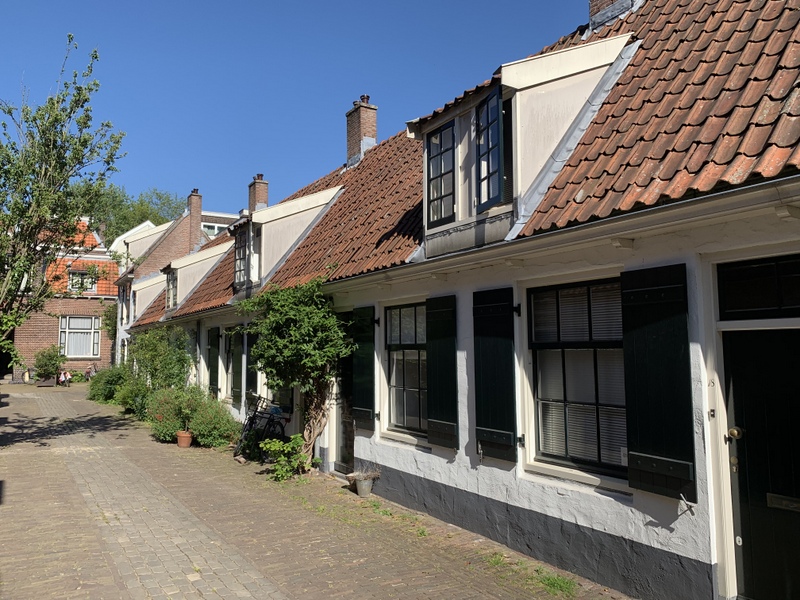
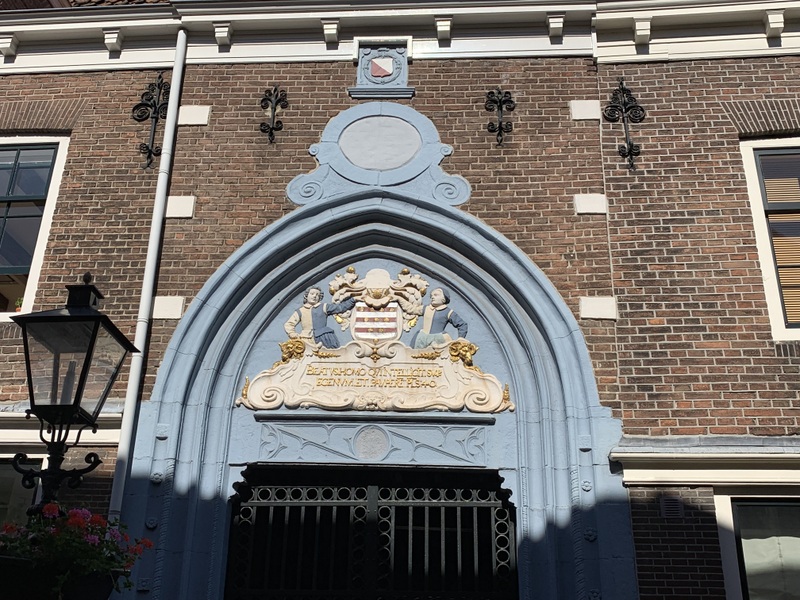
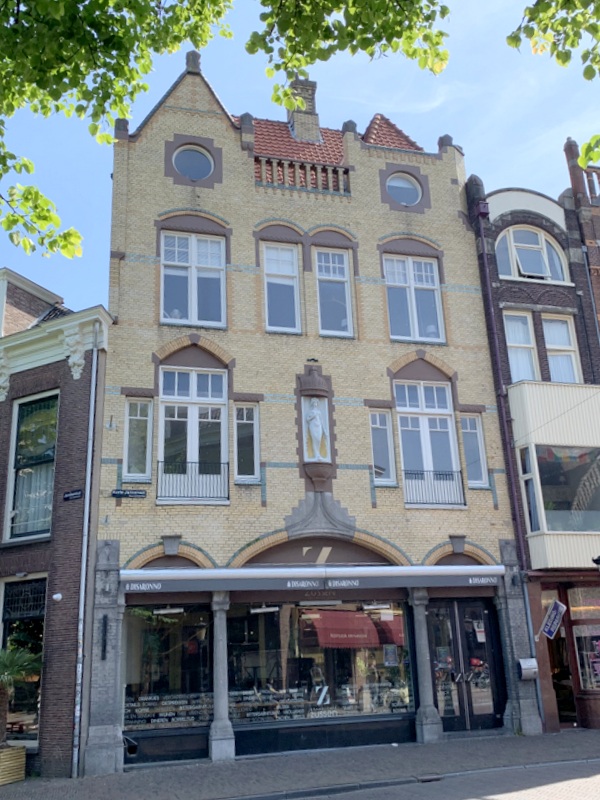

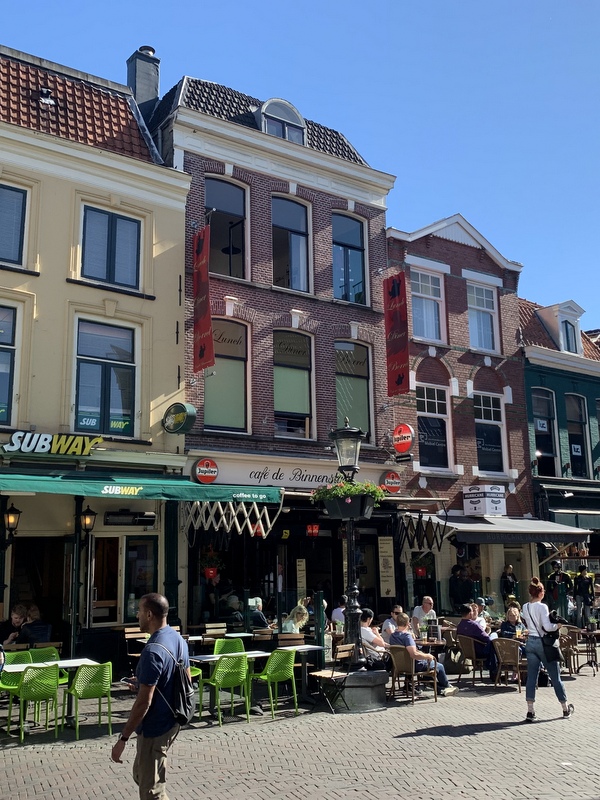
Visit Utrecht! Yes, maybe not as famous as Amsterdam, but much more pleasant (visit, but don’t come with too many, please). Jan, how much can you visit in one afternoon! Very nice to read this story and see my old accelerator again.
Cheers! Wim